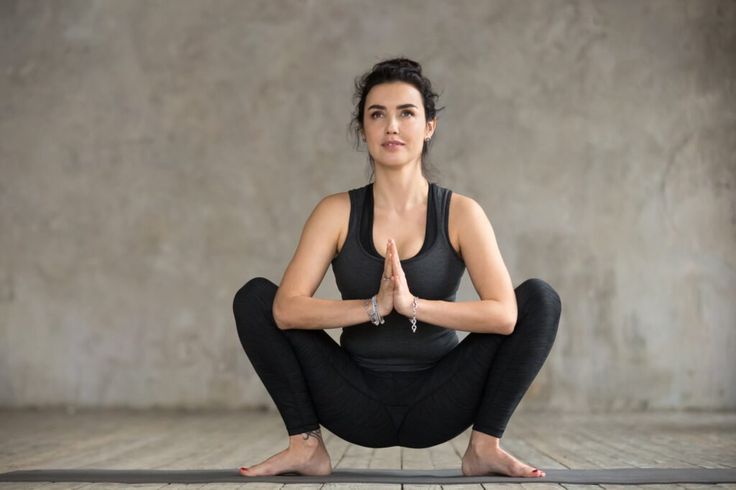Malasana : Garland Pose
Malasana, often termed the Garland Pose, is a quintessential squat pose that roots back to the ancient traditions of yoga. Embraced for its grounding and nurturing properties, Malasana opens the hips and tones the belly, offering a plethora of benefits to those who practice it regularly. This pose not only enhances physical flexibility but also promotes mental calmness and emotional balance. By incorporating Malasana into your yoga routine, you embark on a journey towards a more balanced and harmonious state of being, perfectly aligning with the holistic ethos of yoga.

Steps to Perform Malasana
Entering the Garland Pose may seem daunting at first, but with these simple steps, you’ll find yourself mastering it in no time:
- Starting Position: Begin in a standing position with your feet about mat’s width apart. Exhale as you bend your knees, lowering your hips toward the ground.
- Deepen the Squat: Continue to lower yourself until your hips are lower than your knees. Bring your arms inside your knees, pressing them against the inside of your legs.
- Hands to Heart: Press your palms together at your heart center, using your elbows to gently push your knees wider.
- Spine Alignment: Ensure your spine is straight and elongated, drawing your shoulders back and down away from your ears.
- Hold and Breathe: Hold the pose for 30 seconds to a minute, breathing deeply and maintaining a steady gaze.
- To Release: Place your hands on the floor in front of you and slowly straighten your legs, returning to a standing position.
Benefits of Malasana
Practicing Malasana is a gateway to a multitude of benefits, impacting the practitioner’s body, mind, and emotional well-being. Here’s a breakdown of these benefits, step by step:
- Improves Flexibility: Regular practice of Malasana significantly increases flexibility in the hips, groins, and lower back, areas often stiffened by prolonged sitting and sedentary lifestyles.
- Strengthens Core and Lower Body: By engaging the muscles of the abdomen, thighs, and calves, Malasana helps in building strength in these critical areas, contributing to overall physical stability.
- Enhances Digestive Function: The squatting position of Malasana stimulates abdominal organs, aiding in the improvement of digestive processes and alleviating mild digestive discomforts.
- Promotes Pelvic Floor Health: The pose strengthens and supports pelvic floor muscles, which is particularly beneficial during pregnancy and postpartum recovery, although it should be practiced with caution or under guidance in these conditions.
- Reduces Stress and Anxiety: Focusing on the breath and maintaining the pose encourages mindfulness, which can help in reducing stress and anxiety levels. The grounding nature of Malasana also promotes a sense of calm and stability.
- Stimulates the Root Chakra: Malasana is known to stimulate Muladhara (the root chakra), which is believed to enhance feelings of security, grounding, and connection to the earth.
- Encourages a Healthy Spine: Maintaining an elongated spine during the pose helps in improving posture and spine health, countering the effects of long hours spent sitting.
Tips for Beginners
For those new to Malasana, here are some tips to help you perform the pose safely and effectively:
- Start by practicing the pose for shorter durations and gradually increase as you become more comfortable.
- Use a yoga block under your heels if they do not touch the ground comfortably.
- Focus on maintaining a straight spine rather than trying to squat lower, which can come with time and practice.
Common Mistakes
Avoid these common mistakes to ensure a safe and effective Malasana practice:
- Not spreading the feet wide enough, which can strain the hips and knees.
- Allowing the knees to collapse inward, which can lead to discomfort and misalignment.
- Forgetting to breathe deeply, which is essential for maintaining balance and focus in the pose.
Conclusion
Malasana is more than just a physical pose; it’s a pathway to deeper self-awareness and a balanced state of mind. Whether you’re a seasoned yogi or just beginning your journey, integrating Malasana into your practice can unlock numerous benefits. Remember, yoga is a personal journey, and every pose, including Malasana, should be approached with mindfulness and patience. We invite you to join us at our studio, where our experienced instructors can guide you through the nuances of Malasana and help you harness its full potential. Embrace the journey, and let Malasana be a cornerstone in your path to wellness.